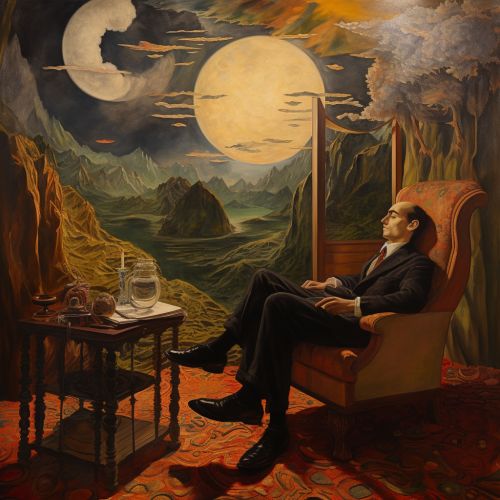Dream interpretation
History of Dream Interpretation
Dream interpretation, or oneiromancy, is the process of assigning meaning to dreams. In many ancient societies, such as those of Egypt and Greece, dreaming was considered a supernatural communication or a means of divine intervention, whose message could be interpreted by people with these associated spiritual powers. In ancient Egypt, for example, those with high social or political status were thought to be in direct communication with the gods through their dreams.


Ancient Interpretations
In ancient civilizations, dreams were often considered as either the divine or demonic entities' messages. In ancient Egypt, dreams were considered a vital way of communicating with the gods. The ancient Egyptians believed that the best way to receive divine revelation was through dreaming and thus they would induce (or "incubate") dreams. Egyptians would go to sanctuaries and sleep on special "dream beds" in hope of receiving advice, comfort, or healing from the gods.
In ancient Greece, people believed that dreams were direct messages from the gods or from the dead. They thought that the dreamer could receive some form of wisdom or knowledge from the gods during their sleep. The ancient Greeks also believed that dreams were prophetic and could foretell the future.
Modern Interpretations
In modern times, various schools of psychology and neurobiology have offered theories about the meaning and purpose of dreams. Most people currently appear to interpret dream content according to the Freudian theory of dreams in countries, as found by a study conducted in the United States, India, and South Korea.
Psychoanalysis, founded by Sigmund Freud, has a significant role in the theory of dreams and their interpretation. Freud believed that dreams are a manifestation of our deepest anxieties and desires, often relating to repressed childhood memories or obsessions. Furthermore, he believed that virtually every dream topic, regardless of its content, represented the release of sexual tension.
Psychoanalytic Approach
In the psychoanalytic view, dreams are a manifestation of a person's unconscious mind and are used as a psychological space to "play out" repressed or unresolved conflicts, emotions, and events occurring in a person's waking life. Jung argued that dreams are not attempts to conceal our true feelings from the waking mind, but rather they are a window to our unconscious. He argued that dreams are messages to the dreamer and argued that dreamers should pay attention to their own dreams to better understand themselves and their relationships to others.


Cognitive Approach
In contrast to the psychoanalytic approach, the cognitive approach to dream interpretation focuses on the process of memory consolidation during sleep. According to this theory, dreams are the result of the brain's attempt to make sense of the random signals it receives from the body during sleep. This theory suggests that dreams are a way for the brain to organize and interpret these signals, creating a narrative out of the seemingly random information.
Neurobiological Approach
The neurobiological approach to dream interpretation focuses on the physiological processes that occur in the brain during sleep. This approach suggests that dreams are a byproduct of the brain's nightly maintenance and repair processes. According to this theory, the content of dreams is not significant in and of itself, but rather, dreams are a reflection of the brain's activity during sleep.
Cultural Interpretations
Cultural interpretations of dreams are vast and varied, with different cultures attributing different meanings and significance to dreams. For example, in some Native American tribes, dreams are seen as a means of communing with the spirit world, and dream catchers are often used to ward off bad dreams. In other cultures, dreams are seen as prophetic, foretelling events to come.


Common Themes in Dreams
There are several common themes that appear in dreams, such as being chased, falling, or flying. The interpretation of these themes can vary widely depending on the context of the dream and the individual's personal experiences.
Conclusion
Dream interpretation is a complex and multifaceted field, with a wide range of theories and approaches. While some theories suggest that dreams have deep psychological significance, others propose that dreams are simply the result of random brain activity during sleep. Regardless of the approach, dream interpretation continues to be a topic of interest and debate among psychologists, neuroscientists, and the general public.
